Babywearing and Prolapse (guest post)
Pelvic Organ Prolapse is common, and can make babywearing complicated. Here is a super post from Nelly Brewer at Forest of Dean Slings on this topic.
Original post by Nelly Brewer can be seee here
🌸 BABYWEARING AND PROLAPSE 🌸
A personal perspective
Pelvic organ prolapse, where one or more pelvic organs bulge into the vaginal cavity, affects A LOT of people who have given birth. If you’ve been diagnosed with, or suspect you may have, prolapse, you may be wondering if it’s safe to carry your baby in a sling or soft carrier.
The answer is – probably! I discovered my prolapse 3 weeks after my first child was born. I’m not a medical professional, but I have gained a great deal of personal insight over the last few years into managing prolapse symptoms, and how to combine this with safe and comfortable babywearing. Below are my thoughts on carrying and prolapse based on my own journey.
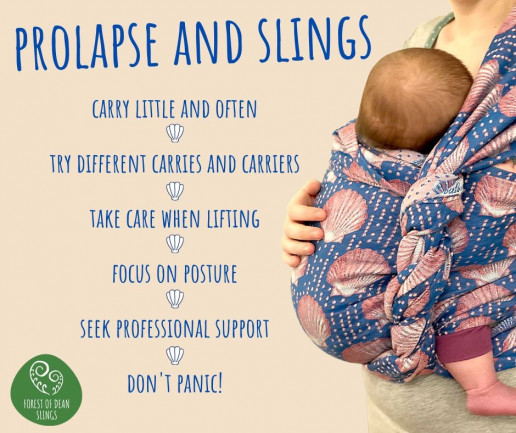
🌸 Carry little and often 🌸
It’s super disappointing to not be able to go on a 4 mile walk through the woods with your newborn. I’ve been there. It sucks. But carrying little and often in a well fitted carrier can help build core muscle strength while reducing further damage. It’s very easy to overdo it, so if you do have a day with a lot of carrying, try to rest the following day. It’s OK to feel frustrated by these limits. Be kind to yourself while you adjust your expectations of your postpartum body.
🌸 Try different carries and carriers 🌸
Carriers are like jeans – different styles suit different wearers and there is no ‘one size fits all’ carrier – whatever the box might say! It’s a good idea to visit your local sling library to try out some different styles, or book a session with a carrying consultant to explore as many options as you can.
Some people with prolapse dislike buckle carriers with firm, structured waistbands, which can constrict and put pressure on the lower abdomen, especially when combined with poor posture. Buckle carriers with less structured waistbands, meh dais and woven wraps might be a better option for some wearers.
You may also find that hip or back carrying places less strain on your pelvic floor than front carrying, particularly when using a carefully tightened woven wrap. Most buckle carriers are suitable for back carrying from around 6 months. Woven wraps can be used for younger babies, but you may want to seek support from a trained carrying consultant before you do so.
🌸 Take Care when Lifting 🌸
Heavy lifting, pushing and pulling is not good for prolapse. Always engage your pelvic floor and breath out when lifting your baby (or anything else!). When moving your baby onto your back in a carrier, a hipscoot or seated lift may be a better option than the ‘superman toss’. Avoid carrying your baby in the car seat wherever possible. A carrier is a much better option for getting your baby to and from the car, and taking them round the supermarket, to baby groups or the health centre.
🌸 Focus on Posture 🌸
Existing poor posture may be exacerbated by the extra load of a baby in a sling, putting extra strain on the back, core and pelvic floor muscles. Paying attention to your posture and taking steps to correct it can help with managing prolapse symptoms both with and without a baby in a carrier.
🌸 Seek professional support 🌸
It’s a good idea to seek support from a trained carrying consultant to help you find a carrier that works for you. It’s also a good idea to seek professional support for your prolapse symptoms. This could include physiotherapy sessions with a women’s health specialist, a low intensity exercise programme focussing on core and pelvic floor strength, and the use of a silicone pessary to support your pelvic organs. In the UK, your GP will be able to signpost you to available NHS services. Be persistent if you’re not offered the support that you need!
🌸 Don’t Panic! 🌸
Prolapses that develop soon after birth have a good chance of improvement even without treatment, but it can take a couple of years. The body produces a hormone called relaxin during pregnancy to loosen the ligaments in the pelvis, and relaxin levels can take a while to reduce after birth, particularly when breastfeeding. It can be really hard to be patient, but hang in there! However, even if your symptoms do go away, it’s important to continue to protect your pelvic floor health.
Further reading about carrying with a postnatal pelvic floor can be found here.
Top FAQS
These are the most common questions about babywearing I am asked, in a single helpful list!
Just click on the links to read the relevant blog posts, some are kindly shared from others
Firstly; some of my most popular articles:
Do the babywearing “rules” really matter?
Babywearing and infant mental health
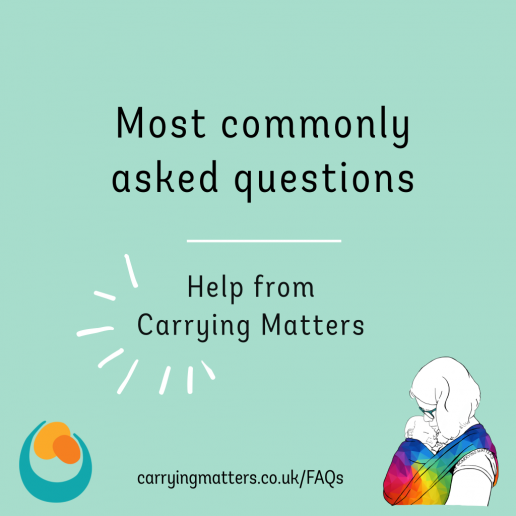
Secondly, I get this query daily. “Can I use your infographics to support families?” ABSOLUTELY! Everything on this website was created to help families with children to feel close and connected. Please credit me appropriately and link back to my website/social media (facebook, instagram)
Here is the link to the infographics (eg the Fourth Trimester/Build a Happy Brain/Why Carrying Matters/Skin to Skin posters, safe carrying images and much more)
Here is a search box to help you find what you’re looking for.
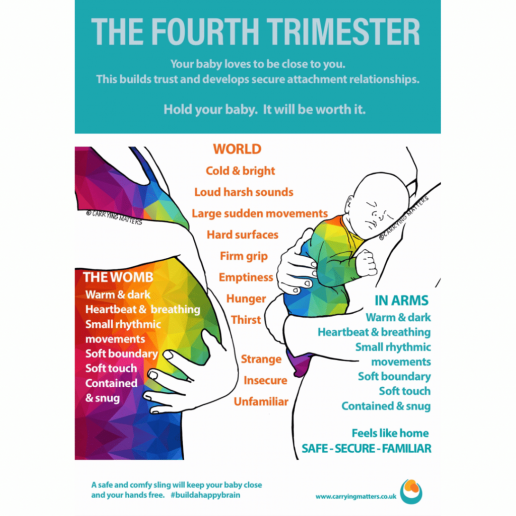
Getting started, and learning the basics
What kinds of sling are there and how do I use them? (links to the major types with useful guides, videos and troubleshooting)
How do I keep my baby safe in the sling?
Babywearing with a Newborn
What are the benefits of babywearing for my baby?
Are there any benefits for me too?
What are the best newborn sling options? (Coming soon)
How soon after birth can I carry my baby and what if I have had a Caesarean Section?
My baby’s head is so wobbly in the sling!
How high should my carrier be?
Can I carry my premature baby?
How do I protect my postnatal pelvic floor and babywear?
What about if I have a prolapse? (Thanks to Forest of Dean Slings)
Help! My child cries in the sling!
Does babywearing help my mental health?
Are slings useful if I have a perinatal mental health challenge?
Carrying in different circumstances
Can I sleep while my baby sleeps in their carrier?
How do I carry more than one child at a time?
How can I carry safely in hot weather?
How do I keep my baby warm while carrying in the cold? (ie can I put them in a snowsuit?)
How do I keep myself and baby dry when babywearing in the rain? (Coming soon)
Carrying adopted or foster children
What if my child has a disability? See this link for a stories from families living with a range of specific conditions.
Common safety queries
Will my sling hurt my baby’s hips?
What if I fall while babywearing? (Coming soon)
Sling Fitness/Dance and Babywearing
There are many fitness or dance classes focused on maternal wellbeing and bonding with baby while babywearing, which can be a great thing to participate in, like Barre and Baby, Dance Like a Mother, Joiemove and Sling Swing, to name just some.
We all know babies thrive when close to their mothers, and baby carriers can help with this rather than putting babies down all the time. Movement and activity are known to lift the mood, and friendly, welcoming social activity is an important part of helping new parents find a supportive community so they feel less alone. So keeping babies close during a fitness or dance class may seem to be a match made in heaven… or is it?
Some classes market themselves by suggesting that new mothers should be trying to “get their body back” shortly after birth, so they feel good about themselves. I dislike this phrase; after all, why would you want to encourage a butterfly to revert to a caterpillar? Motherhood and the changes that come with it are to be celebrated. Many women would like to work on the strength and health of their bodies, but this should be a positive choice, not one made out of shame or embarrassment.
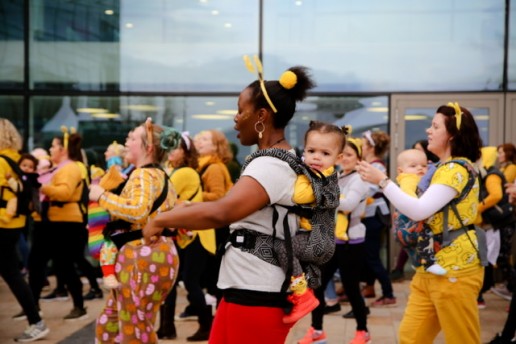
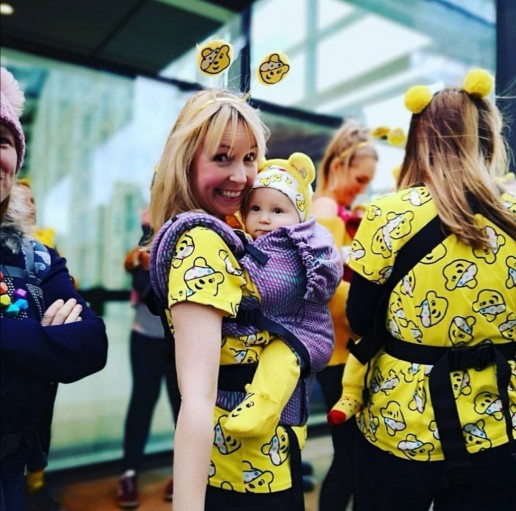
Baby safety at all times, and the health and wellbeing of new mothers are both of vital importance. It is my firmly held belief that anyone who is suggesting or recommending the use of a carrier during a class should be competent and confident in their use. This can only come with adequate training.
Furthermore, I believe that the long term health and fitness of women after birth and pregnancy takes precedence over quick-fixes. The pressure to “get your body back” and the media focus on celebrity bodies is not helpful for women. Good mental health and a supportive community are cornerstones of adapting successfully to life as a mother, and for many being active is part of that. However, there is often a significant lack of knowledge about the effects of many activities of daily life, let alone exercises or running etc on the pelvic floor, and loading it further with a baby carrier (especially one that is poorly fitting and uncomfortable) is detrimental in the early weeks to months.
It may take six months to a year for the body to recover completely, (according to research at Salford University). Of course this is very individual, depending on previous levels of health and fitness, how pregnancy and birth went, etc. Some women will be much more ready to return to their previous levels of activity than others. The “six week check” by the GP is often used as a benchmark to “sign off” as fit for exercise or dance classes. However, this is not what the six week check is for and this is not an appropriate way to establish if women are ready to return to increased levels of activity.
You can read more about my thoughts on slings and exercise here.
I believe that in order to be able to offer dance or exercise classes safely and beneficially, all instructors should be focused and committed to the health and wellbeing of both the mother and the baby as their top priority.
Instructors should all
- Have formal, high quality and officially recognised postnatal training qualifications (requiring assessment, and willing to provide these credentials to parents who ask.)
- Have a significant depth of knowledge on the pelvic floor after birth and the effects of certain movements and activity on this recovering organ. This is often lacking. I recommend the courses for fitness professionals run by Louise Field of Adore your Pelvic Floor.
- Offer proper assessment of a mother’s functional strength (beyond the “six week check”) and a willingness to adapt movements to reflect this.
- Demonstrate the ability and commitment to put the client and baby’s needs first, even if it means saying that the class isn’t suitable. Babies are not an accessory to be used for fitness.
plus
- High quality, in depth babywearing peer supporter training to ensure mothers and babies are carrying safely at all times, without any compromises. Instructors should have a particular interest in babywearing for its own sake, as opposed to something to add onto existing classes. Ideally they will already be familiar with slings. They should demonstrate a keen desire to be practising optimally and in line with current best practice. Baby and maternal safety is always paramount.
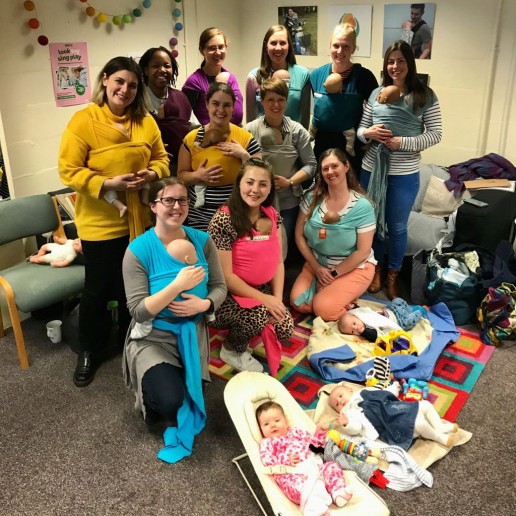
If you would like to explore the option of peer supporter training, please contact me to discuss. I reserve the right to decline training.
Please note that training with me is NOT an endorsement of any class, and Carrying Matters is NOT and never has been affiliated in any way with any fitness or dance classes.
I am no longer able to offer half day “safety awareness training” courses to those who are running postnatal fitness/dance classes. After a while running these courses, I feel this insufficient time to cover all the issues in enough depth to ensure the safety of babies and their mothers. This is especially as babywearing is not usually the main focus of the class and many class instructors have hardly any personal experience with babywearing themselves. Anyone who sees babywearing as an integral part of their class will be willing to invest in in-depth training with assessment.
Please note that I have attended a full day of training in pelvic floor awareness for fitness professionals myself.
Educational Resources
This page contains various resources that may be useful for education and supporting others. Leaflets, posters and postcard packs can be purchased. Images and PDFs can be downloaded free of charge by clicking on the photos. Please ensure you credit me (Dr Rosie Knowles) if you use them.
Safety Resources
- The 4 Key areas webpage can be found here – this has links to translations into other languages.
- The Carrier Height webpage is here – the image can be found lower down on the page.
Click on the image to download a PDF, or order a pack of high quality printed leaflets using the button below.
Click on the image to download a PDF, or order a pack of high quality printed leaflets using the button below.
Click on the image to download a PDF, or order a pack of glossy postcards or posters using the button below.
Click on the image to download a PDF, or order a pack of glossy postcards or posters using the button below.
Click on the image to download a PDF, or order a pack of glossy postcards or posters using the button below.
Click on the image to download a PDF, or order a pack of glossy postcards or posters using the button below.
Click on the image below to download a PDF, or order A3 posters using the button below.
Click on the image to download a PDF, or order A3 posters using the button below.
Click on the image to download a PDF, or order A3 posters using the button below.
Click on the image to download a PDF, or order A3 posters using the button below.
Click on the image to download a PDF, or order a pack of posters using the button below.
Click on the image to download a PDF, or order a pack of posters using the button below.
Read Rosie’s well loved Why Babywearing Matters book here, published by Pinter and Martin.
Read Rosie’s well loved Why Babywearing Matters book here, translated into Polish by Lenny Lamb.
Bonding with your big kid
Bonding with your big kid is just as important as bonding with your baby. Older children need love and secure attachment relationships too, as their brains are still growing and their foundations still being laid down.
“I wish I had known about slings when I had my first child!”
“My son suddenly wants to be carried all the time suddenly and he’s so heavy now, I feel like we missed the boat.”
“My big girl is finding it hard with our new baby and seems to be much more clingy than usual. I wish I could carry her somehow..”
Do any of these comments seem familiar to you? I hear this kind of thing almost daily, and while part of me rejoices that now, at least, these parents do know how fantastic slings can be for family life, I appreciate their sadness.
But did you know, big kids like to be carried too? How many of us have hoiked our hefty toddlers onto our hips when their legs get tired of trundling along, or felt little arms wound around our necks when they are tearful? How many of our huge preschoolers still appreciate long hugs and piggyback rides? All children need closeness, long beyond the baby stage, long after they take their first steps, long after they start school… and so do grown ups! Loving contact is vital to our emotional health, from cradle to grave.
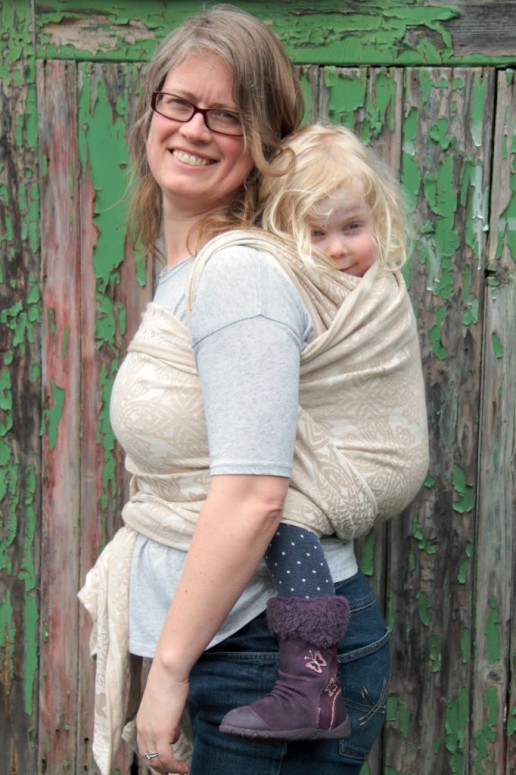
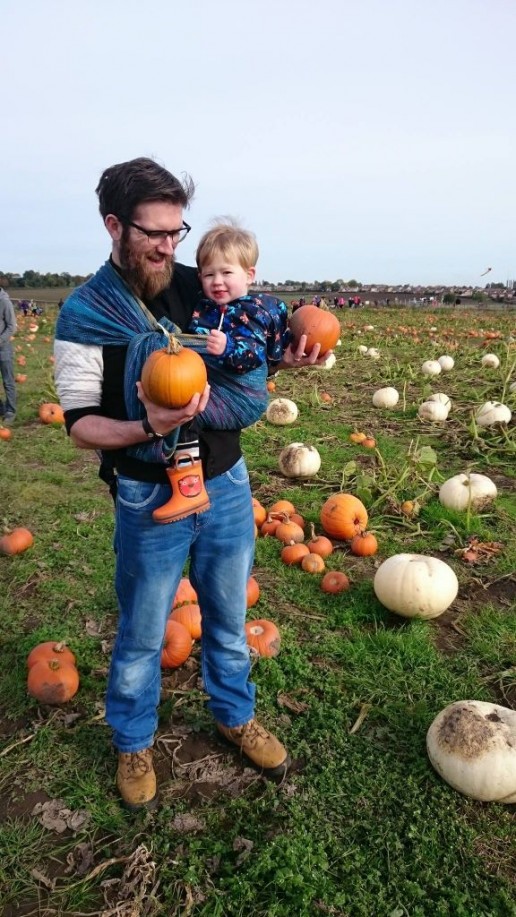
A sling is, at its most basic, a tool for enabling close contact, almost like another pair of enfolding arms around your child, while your real arms can be used for other things. A good sling, when used well, provides a feeling of all-around gentle pressure, as if being hugged all over. This can be very valuable for children struggling with sadness, with sensory overload, with tiredness, or fear from loud noises, for example. Being close to a parent’s body is reassuring and sends a valuable message to a child that “You are loved. I will look after when you are unhappy, I will keep you close when you need it. I am always here for you.” There are many other advantages to slings beyond this opportunity for connection; not least that they can be very comfortable and help to distribute the weight of a child around your body evenly, making it much easier and much less tiring than in-arms carrying. They can help to provide nourishment – breastfeeding or bottle feeding on the go, they can make school runs easier, allow greater freedom in exploration, enable naps, and keep exuberant runners out of danger in crowded areas or near roads etc.
Slings with Big Kids
You can use pretty much any kind of sling with a bigger child, even a stretchy, if it is a high quality hybrid one like the JPMBB or the Ergo wrap. I’ve helped a couple of parents with toddlers find the stretchy love, as there’s nothing quite like the enveloping gentle bounce you get with these. They do tend to work best and most easily in front carries.
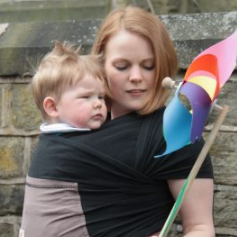
Ring slings can be fantastic, if you have the shoulder style that suits you best (pleated vs gathered), and made of a fabric that is supportive enough. People often suggest linen or hemp or silk to add strength to the softness of cotton, which indeed they do, but many 100% cottons are more than sturdy enough for heavy children, who can become easier to carry as they develop more core strength and become more compliant and easier to carry than the “bowling ball stage” – it’s worth trying a few out!
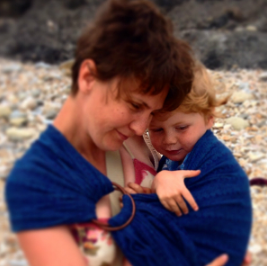
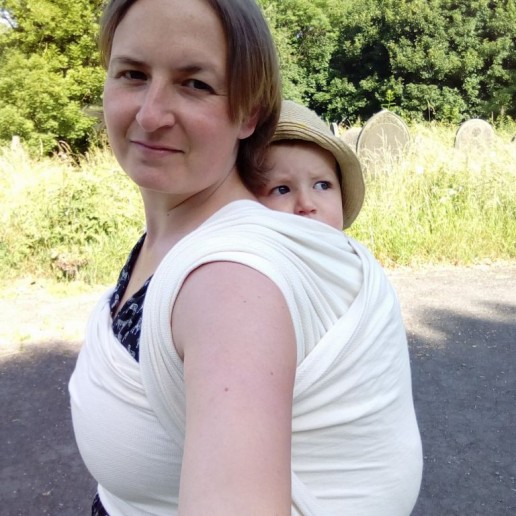
Woven wraps are the most versatile, as they can be tied in different ways, in different positions and with different levels of support. As with ring slings, the fabric used can make a difference to how a wrap feels – fibres with extra support can be helpful but may not be necessary, and as above, understanding tightening techniques and how to get a good position can really help you make the most of your current wrap
You can get toddler size meh dais, half buckles and full buckle carriers, even some up to preschool size. Again, it is worth trying a few out at your local sling library as one size does not fit all, and the body size and shape of the carrying parent plays a part too (some preschooler carriers will just be too big for petite mums, for example). Waistbands may need to be worn lower (around the hips) for front carries, and some creative methods for getting a good seat in a back carry may need to be employed! Please do take advantage of your local sling professionals about whether you need a bigger carrier for your child; it may be that your current carrier just needs a few tweaks in technique to get the most out of it. Many people upgrade to toddler carriers earlier than really necessary, and too big a carrier may be more problematic than one thats just a touch small (see my “beyond the knee to knee” article for more information).
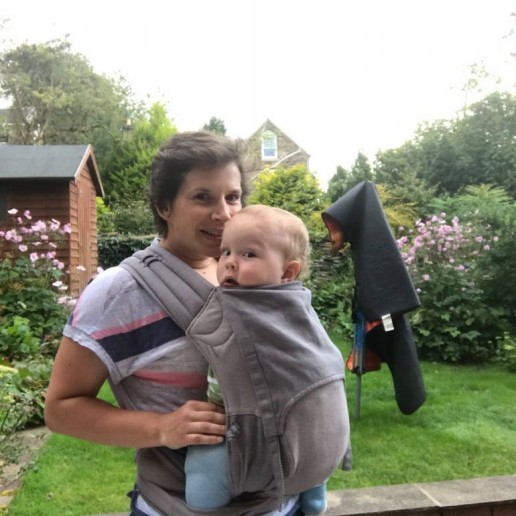
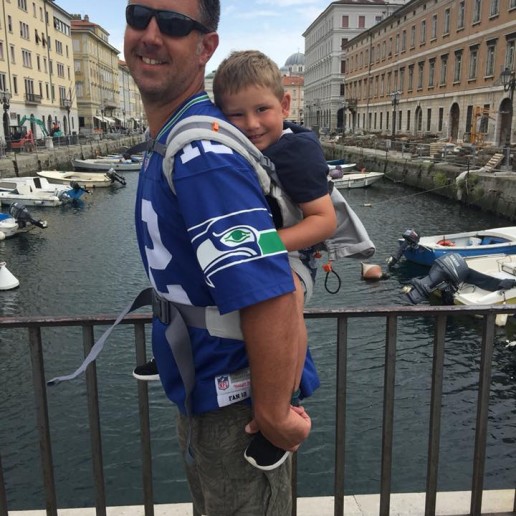
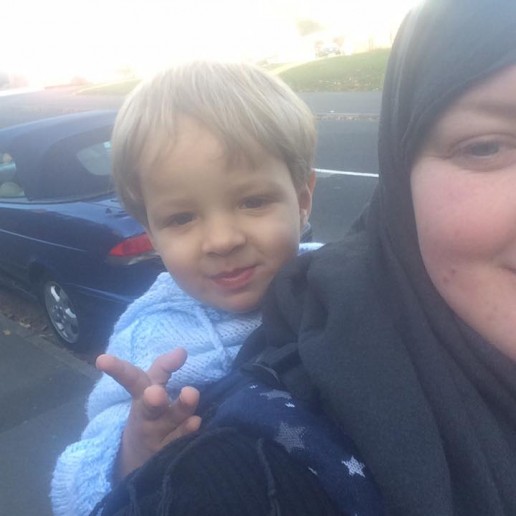
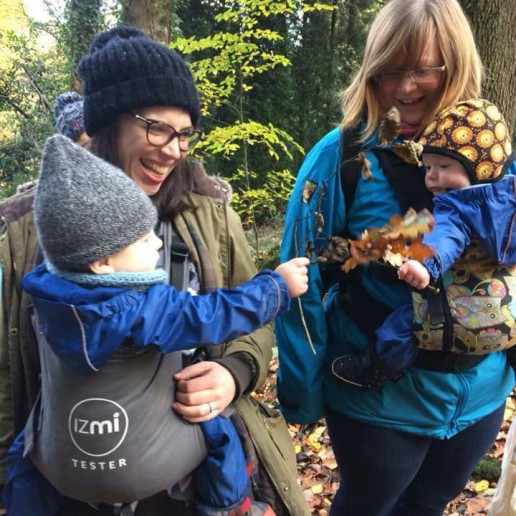
What about the inevitable comments “he’s too big to be carried like that, he should be walking!” or “You’ll just make that child clingy, you know”? Well, I think a sling is as valid a means of transport as a pushchair, and far more comfortable than achingly weary in-arms carrying. Don’t be afraid to carry your toddler – for every comment you get, you may well have planted an idea in someone else’s head. Ensure that your child doesn’t feel hurt by any comments, sometimes talking about any incidents together afterwards can be helpful. Using a sling for your bigger child from time to time will not harm them, nor will it make them babies again, any more than a hug or a hip carry would do.
My own experience
My big girl, who was nearly 4 at the time of writing, is much less often carried these days; much to my chagrin.. but she is vocal about it when she does want to be carried, climbing up me and wrapping her legs around my waist. I am happy to oblige as I’m never sure how many more carrying days we have left to enjoy. She has moods, and disappointments that the world doesn’t revolve around her, and sometimes she finds it hard to wind down. Often, at these moments, a sling has been our saviour, holding her close so she can relax, feel safe, and listen to my reassuring murmurs, while I can still get on with some of the things that just can’t wait, or save my back and arms from her lopsided weight! We use all sorts of carriers – ring slings for quick up and downs, woven wraps for sleepy cuddles, preschooler buckle carriers for rainy school runs, warm snuggly half buckles for winter walks.
Even my (then) six year old found a wrap carry a great reassurance one day when he got separated from us at the Yorkshire Sculpture Park; he was very distressed when found half an hour later and just wanted to be holding onto me. My husband’s shoulders got pretty tired after a few minutes; but I was able to carry F on my back for well over half an hour, due to the support and the weight distribution, enough time for him to feel reassured and connected again. I found it really helpful too – it was a pretty horrible forty minutes and having him in close contact was very valuable for my own feelings and allowed me to breathe and absorb, and move on.
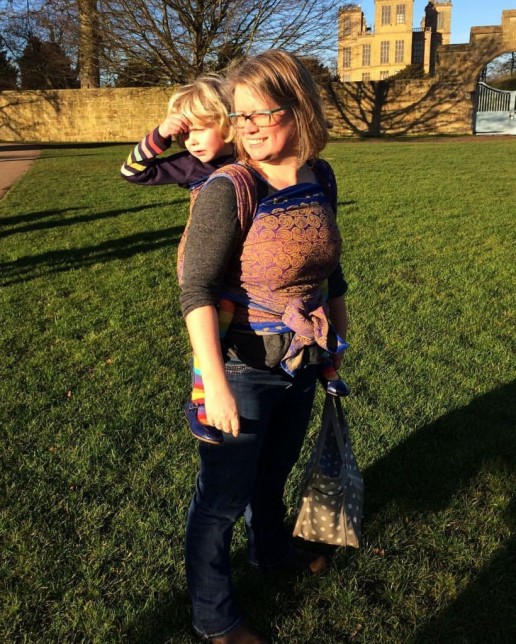
A local story of re-connecting with a sling
I’ve got to know one family with a preschooler pretty well, they hadn’t used a sling for over a year, but started again, almost from scratch. Here’s what they have to say about their experience of carrying a bigger child.
After starting nursery, H became anxious and disconnected. She chewed her fingernails to a painful point, and became difficult to communicate with, as well as regressing in toileting. Instead of adopting behavioural control techniques, I drew on my experience from other parts of our lives and adopted a regression tactic. A big part of this was returning to carrying her in a sling. We had used our high-street carrier rather than a pram on our dog walks, but had given this up over a year before as she had outgrown it. We wondered if a ring sling would be a solution for short snuggles for reconnecting. H was too heavy to attempt this from online videos, so we booked a workshop with a local sling consultant, who reassured us that she wasn’t too big, and showed us how to ensure we were all comfortable. The ring sling has been perfect for our needs and has really helped us all. More often than not, it has doubled up as a dramatic scarf for the 80% of the time H wanted to walk!
H is now almost 5. Our new buckled carrier is the perfect tool for winding down for bedtime on a camping trip, resting tired little legs whilst hiking (without the bulk of a framed carrier), and elevating her out of danger in busy, crowded areas. I really believe there is no such thing as “too big to sling!”
Slings with Two Kids
Another situation where carrying a bigger child can really help is with sibling jealousy. The other day I spoke to a family who hadn’t used their sling with their toddler for some time, and now have a new baby. Big sister has been feeling a bit jealous of the new arrival and has wanted to begin breastfeeding again. They asked for some advice, and I suggested that their daughter would really appreciate the contact that would come from using their ring sling and buckle carrier again… and so it seems to have proved. It’s not so much the desire to be a baby again, but more of a chance for communication – “you still belong to me, don’t you?”
I’m working with another lady whose older child is struggling to accept their brand new baby. She asked me to show her how to breastfeed her baby in a sling, in the hope that this would allow her to be hands free to play with her toddler. She’d never carried her first child but was loving the slings with the little one. Successful breastfeeding in a sling is a challenge that requires care to do well and safely, and in my opinion is never fully hands-free. However, one hand available can make a big difference – you can hold a book to read, help with a jigsaw at the table, stir a mixture, hold a hand, for example. Amongst other things, we looked at a ring sling, which can be used for little babies as well as bigger children who love to sit on the hip and look around, so it is a carrier that can be used for children of multiple sizes. Hopefully, carrying the bigger child from time to time while the baby is sleeping, or in a pram or carried by Dad will be helpful for dealing with big feelings and the need to know that his Mum is still Mum and will always be there to meet his needs, even with the new addition taking up so much of her time.
There are some carriers that can be used with small babies and bigger children; which means the same carrier can be used for both children when needed. The ultra- versatile ring sling and woven wraps are good examples, which mould around the parent-child dyad and can be used from birth to preschool age and beyond.
Some mei tais with adjustable width can work well for families with children born with a small age gap. The buckle-waist equivalent half-buckles can be useful, or those with wide wrap straps that can be tied in such a way that bigger children will be supported knee to knee. Some full buckle carriers can be used from birth and their panels can be adjusted to the size of the child. Some come with inbuilt adaptations for using with babies, and some have separately purchased inserts for small babies to rest on until they grow big.
Do visit your local sling library or get in touch with a sling consultant for some help navigating all these options; there will be something to suit nearly every situation!
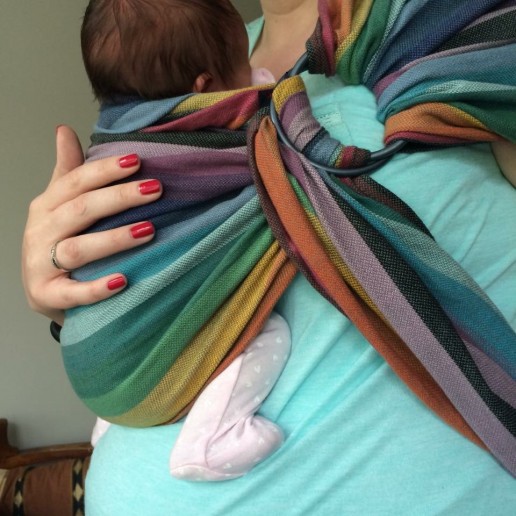
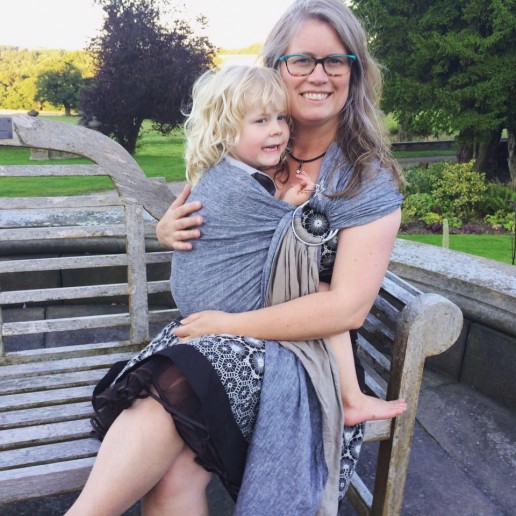
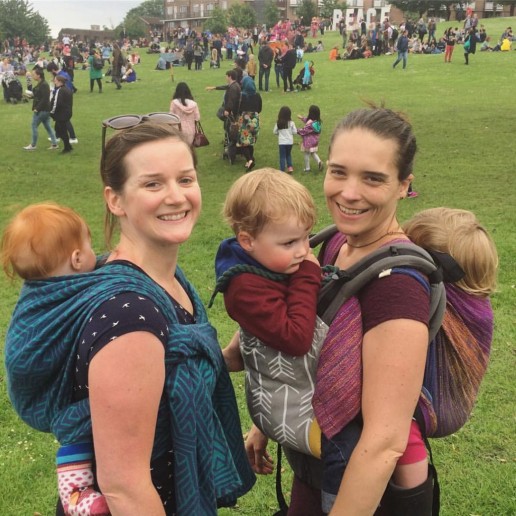
Slings during Pregnancy
During pregnancy, carrying an older child can be an opportunity to help deepen relationships and prepare for the new arrival, being reassuring that things really are going to be all right after all. Carrying while pregnant has its own challenges too; ensuring the bump isn’t compressed, that weight is well distributed, that any symphysis pubis discomfort is not exacerbated. Do see your local sling consultant or chiropractor or physio for help if you need (bearing in mind that many health care professionals may not be up to date with ergonomic, safe carriers.) There is more reading here about carrying while pregnant.
In summary, older children do not stop needing the love and support of their caregivers for a surprisingly long time. Our society seems to believe that we should encourage separation of children and caregivers as young as possible, to breed “independence”, when actually, neurophysiology suggests that children will learn independence at their own pace, as their cognitive and emotional capacities develop.
Carrying in Special Circumstances
Sometimes there is a need for extra support with using slings; don’t be discouraged if you or your child have extra needs, there are always ways to keep carrying in special circumstances.
If your child can be held and carried in arms, there is likely to be a way to carry them safely in a sling. Twins can be carried in slings, as can a baby and a toddler at the same time (tandem carrying). There are ways to carry safely in pregnancy, to carry after birth, to carry premature babies. We will help you to carry your child if you have a disability, or if your child has special needs or physical health concerns. We are here to help you find a way to keep them close.
This page links to some useful information; personal stories about carrying in special circumstances, professional advice and useful links. Please see our Common Queries page for simpler situations.
If you have a special story, please get in touch to share them with me for the wider community!
I also recommend the Tania Talks blog posts on babywearing (she is a wheelchair user)
https://www.whentaniatalks.com/the-realities-of-back-carrying-as-a-wheelchair-user/
https://www.whentaniatalks.com/back-carrying-as-a-wheelchair-user/
Here is an excellent downloadable article on Potential Therapeutic Benefits of Babywearing by Robyn Reynolds-Miller.
You can find more educational resources here for downloading (such as infographics and leaflets and images)
If you need more specialised support or have a query not covered here, please do get in touch with me or find your local sling library at Sling Pages.
Common Queries
Families often have a lot of questions about using carriers, such as “what is a healthy hip position”, or “is it OK to face my baby out in a carrier?” “Will using a sling make my child clingy?” “What do I do in different weather conditions?”
This page links to many of the common queries around slings; information sharing to allow people to make informed choices that work for themselves and their families.
Here is a quick link to the most common FAQs too!
Don’t forget the sling safety guide is here.
If you need more specialised support or have a query not covered here, please do get in touch with me!
You can find more educational resources here for downloading (such as infographics and leaflets and images) and you can read about carrying in some special circumstances here.
The Importance of Carrying
Positive Effects of Carrying for Society
The positive effects of carrying for society are many; making a change at an individual level can have a significant impact when lots of people do it! In-arms carrying and using slings is one way that we can change the future that we all have to live in.
Possibly one of the most important positive outcomes for carrying for a parent and the society we live in is the effect it can have on mental health, which is a society-wide issue.
Western society is increasingly fractured and isolated, with a decreased sense of local community and shared care. The burden of mental unwellness in our society is growing, and becoming a parent with this background can be very tough indeed.
The birth of a baby is often an overwhelming time for both parents, especially when also faced with the expectations and demands of a fast-paced culture that often judges people by their apparent productivity and appearance. It is no wonder that postnatal depression is on the rise – affecting at least 10-15% of new mothers. This is likely an underestimate as parents feel ashamed to admit their feelings, with the effects of hiding their struggle having significant knock-ons for the whole family.
Fathers are often unrecognised to have the condition themselves, and this all adds to an increased risk of children coming to harm. This is a terrible indictment on our culture and its lack of care for some of the most vulnerable individuals in our communities.
The way we live now isn’t going to change overnight; funding for parental leave or greater support for mental health isn’t going to become suddenly available, and the media bombardment of products for parenting won’t vanish. But neither are the emotional needs of young children going to go away, especially if we want them to grow up well and be happy, confident mature individuals who are well integrated into society.
We need to find ways to nurture our children while still functioning as our culture expects us to, and this is where carrying children (often using a sling) can help. Carrying children encourages and protecting parent’s precious closeness with small children while helping to build the bonds that will be the foundations for a positive future. Giving children a secure and confident start in life pays dividends later for the whole of society.
- Families who enjoy secure attachments and strong bonds are more likely to weather the early years of parenting safely and build resilient children with a secure self-esteem. This will help to counteract the growing burden of mental "un-health" especially as funding for mental health services continues to decrease. Carrying (and using slings), via oxytocin release, helps to build these bonds; and can improve resilience to the Adverse Childhood Experiences that so many children experience. Read more about ACE's here.
- Anything that improves mental health and assists families struggling with PND is worth investing in, especially something as accessible and low cost as a carrier.
- A very sobering review of international attachment studies done by the Sutton Trust found that infants under three years who do not form strong bonds with a parent “are more likely to suffer from aggression, defiance and hyperactivity when they get older.” They found that up to 40% of children lack this secure bond with their parents, and this is likely to lead to their own children also suffering from insecure attachment; a vicious, repeating cycle. “Parents who are insecurely attached themselves, are living in poverty or with poor mental health find it hardest to provide sensitive parenting and bond with their babies.”
- They also found that children with weak attachment were more likely to be obese later in childhood (with subsequent effects on their long term adult health).
- Communities are the normal social structures of the human species; finding common ground and sharing the strains of life together keeps us going. Many families find community among like-minded parents; most sling users make strong supportive friendships within the sling community.
- Carrying keeps us active; movement is essential for health and fitness. Dynamic carrying in arms (if possible) helps children to hone their growing neuromotor skills, and carrying young children (or those with tired legs) is good for adults too; bone remodelling, muscle health and posture.
- As the rates of breastfeeding are higher in carried babies, the health benefits of breastfeeding will be more marked in societies who carry a lot (reduced breast cancer risk, reduced osteoporosis, increased transfer of antibodies, to name just some.)
- Babies who are carried are more content and cry less. Crying is very stressful; and successful calming of a distressed baby will build a parent’s confidence in their ability to care for their child and also reduce the feelings of tension in social gatherings or in large public open spaces.
- Carried babies may have had less ear infections, less corrective treatment for plagiocephaly, and thus have been less in need of the NHS budget.
I believe that health care professionals should therefore promote frequent carrying of infants to achieve the best possible outcomes for families, and for the long term benefit of the societies they live in. It is a low cost intervention that can have far-reaching effects.
Positive Effects of Carrying for Parents and Carers
In-arms carrying and using slings doesn’t just bring good things to babies – they can make a real difference to parents and other caregivers too. Read more about the benefits of babywearing for adults here.
- It encourages bonding and deepening of a loving relationship via the release of the hormone oxytocin; having baby close heightens the parent’s awareness and can increase their responsiveness to their baby’s needs. You can read more about the effects of oxytocin here.
- It can increase parental confidence. The parent may be more “in tune” with their baby, as the carried child is part of the parent’s personal space, and the parent will be more aware of changes in a child’s mood, and thus be more able to respond to the child’s facial expressions, gestures and vocalised needs sooner. This will build mutual trust and contentment.
- There is evidence to suggest that sling use can help with perinatal mood disorders such as postnatal depression, in part due to oxytocin release and in part due to increased bonding.
- Fathers and other care-givers will be able to use a sling as well, increasing family connections and helping baby recognise more people by their voices and scent. Sling use can be very valuable in giving family members “cuddle time” and can be an useful tool for childminders as well.
- Slings can provide “hands-free” parenting, which can be very useful, such as making a quick snack, interacting with an older child, doing the housework or other chores. A “fussy” baby may calm and settle in a sling, allowing the parent more choice about how to use their time.
- Slings can provide opportunities for physical exercise and mental stimulation; a new skill to learn and a new social circle (social sling meets, for example!) Many people find that carrying their children on walks helps to lose weight and tone muscles. Dynamic (in arms carrying) is also a good workout!
- Slings can provide greater access to the world – in a good sling the only limitations are where your feet can take you. Onto the beach, off the beaten path, up a tower, onto crowded public transport, around busy airports, the world is your oyster!
- Slings can provide comfort and nurturing for older children as well.
Slings and Exercise
 Movement is good for you!
Movement is good for you!
Many people wonder about slings and exercise; can they be done safely together?
Movement and being gently active in the early months after your baby is born is good for your mental health and can help with low mood. Being able to get out of the house and enjoy some fresh air and activity with your child can be great, especially if they are at your height and you can interact and chat and share the experience of the world happening around you together. A sling can be a great way to help this to happen - keeping your child safe while you get on the move. Walking with your baby held close and comfortably, building up your tolerance as your body recovers from birth is all you need. It can be a great way to spend time with other people; the endorphins from activity and fresh air can help with the low mood so many 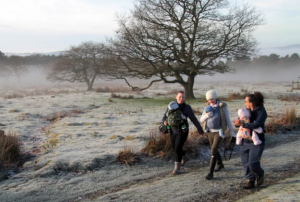
Take your time!
However, doing too much too soon can be unhelpful in the long run, for your body's recovery from birth. Every mother's body is different, and your level of fitness before and during pregnancy will also play a part. Pushing yourself too far too fast can play havoc with wound healing, with slower cessation of bleeding, with prolonged problems with pelvic floor issues, for example. Take your time. There is no need to spring straight back into your pre-birth activities.
Don't fall into the trap of believing that you need to "get your body back as soon as possible." For a mother, the act of bringing life into the world is transformative: your body will never be the same again, and that is a great thing, one to be proud of!
It is good to be fit and healthy, but there is a time for nurturing the new life you have brought into the world, resting and growing together, and a time for weight loss and organised fitness. Simple walking with your baby in a comfy well-fitting carrier and spending time with friends may be all you need for the first few months, for mood lifting and gentle exercise. Does your local sling library organise babywearing walks, or why not start your own?
Points to Consider
If you decide you would like to join fitness or dance or any other classes that have a sling component as it seems a good option for your needs, here are some useful points to consider.
Is your body ready?
- This is very important. Pregnancy and birth have an impact on the core postural and abdominal muscles and the pelvic floor; it takes time for these to recover. Floors may be weak, but they can also be over-tight, both cause problems.
- Overloading still-recovering tissues with certain stretching or weight-bearing activities with the extra weight of a child in a sling (especially if it is poorly fitting or worn low and loose) is not wise, and may end up delaying recovery and causing more long term damage. Wide and deep squats (as opposed to narrow based with vertical shins), side lunges and jumps/bounces, for example, are all inappropriate until pelvic floor function is restored.
- Good posture (with aligned shoulders, pelvis/hips, knees and ankles) matters; many mothers walk with a sway back shape, out of habit or to balance weight of baby, or stand with one hip jutting out. This strains the floor and the core and needs to be addressed.
- Walking with a baby in the sling, ensuring good alignment and posture, gradually increasing the speed and duration, is usually enough exercise for most women in the early months.
- Please do not rush; pelvic floor dysfunction is very, very common (14 million women in the UK are known to have an issue, and many many more never seek help and remain undiagnosed).
- Leaking is NOT normal or to be expected, if you leak with a baby in a sling, on coughing or laughing, you have pelvic floor dysfunction. If you are unsure if your pelvic floor is recovering normally, please see your GP.
Do you have a good carrier to keep your child safe and keep you comfortable?
- As with all things: your sling is never a substitute for alert responsiveness and your focus should always be on your child and their needs. A sling should hold them comfortably and safely with airway protection and neck support (ideally by appropriate seated positioning that meets the TICKS guidelines). Movements should never allow a baby to be shaken, and should always be done with their head and neck position in mind.
- Forward facing out carriers, especially narrow based ones, tend to encourage the baby to lean away from parent, which has an impact on parent's posture, overcompensating for the weight by leaning back. Poor posture can lead to significant health problems.
- It is worth noting that many manufacturer instructions do not recommend exercising with their product; using your carrier for this purpose may invalidate any warranties. Additionally, it is unfortunate that a number of baby carriers are not as well designed as they should be, and their instruction manuals are less than ideal.
Is your baby developmentally ready for this kind of activity?
- Parental activity should never lead to any kind of shaking for children, particularly with young babies whose heads are disproportionally heavy and whose neck muscles are still not fully developed (babies tire very easily as their muscles fatigue).
- Babies should not slump over in the sling during the class and should not fall asleep facing out.
- A good class should respect your baby's development and not include any kind of vigorous repetitive jumping, spinning or shaking movements; your child's safety is the main priority here.
Does the instructor fill you with confidence?
- Does the instructor have appropriate recognised sling training to ensure your baby is kept safe in the sling at all times? It is worth checking, as it shows a good level of preparation and thought.
- Do they know enough about baby anatomy and development and muscle fatigue with certain positions?
- Will they recognise if your child has moved to a position where their airway could be compromised?
- Will they be able to help you correct this (especially if you are not an experienced sling user)?
A good analogy might be a canoe class. If I wanted to attend a class and was required to bring my own life jacket, I might not know which was a reliable brand that would be the most likely to keep me safe. I might ask the advice of a local lifejacket expert, but equally I might buy a cheap one off the internet which has poor instructions that didn't really show me how to keep myself safe or recognise when it wasn't on properly. At the canoe class I would expect that my instructor would be able to give me the once over and check my lifejacket was fit for purpose and on correctly, and would indeed keep me safe, right there and then. I would expect that if my lifejacket began to slip or wasn't in fact on properly during the class, the instructor would be able to identify that and take appropriate measures to remedy this, to keep me safe. I would expect that my instructor would be fully qualified in all aspects of the class - after all I am entrusting my safety to them. Their position of authority means I am more likely to assume that they know what they are talking about, and as a newcomer to canoe classes I will take any advice they offer about the equipment used in the class as expert (even if it isn't).
- Does your instructor have appropriate qualifications to ensure your postnatal body will not be inappropriately overloaded by the extra weight of baby with the movements in the class? If they have recognised post-natal training they will be happy to share this.
- Do they enquire about your overall fitness and pelvic floor health and adapt the routines for your needs? The "six week check" at the GP is not sufficient "sign off" (very few GP's have the time to discuss exercising at the postnatal check, if there is one at all!)
- Do they come across as truly well researched and acting in your best interests?
- Are they taking your and your child's wellbeing as seriously as you do?
- Are they being responsible?
I feel strongly that there are many risks involved in taking part in organised classes for fitness/dance with slings. I would urge all my readers to think very carefully before getting involved with anything that has any kind of vigorous movements such as jumping, bouncing, spinning, and so on. Babies need our loving focus, care and attention; their safety must remain the first priority at all times. Your body's recovery matters too; take your time!
Do speak to your local sling librarian/consultant (Sling Pages has a list) about any classes you are considering before you go - they will be able to advise you on its suitability and help you find a sling that will work well if they feel the class is safe. There are some well-set up and well trained franchises or individual providers who do take their responsibilities towards you and your baby seriously.
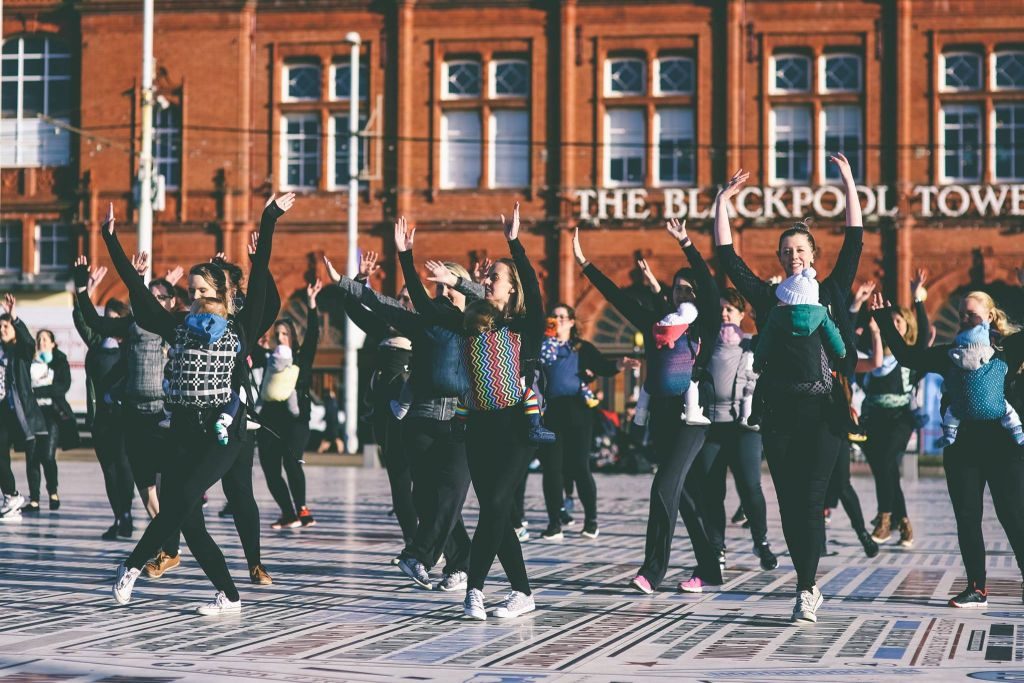
Further Reading
This post on Babywearing Exercise is extremely helpful for further reading and should be read by anyone investigating such classes. Thanks to Emma at SlingSure & Fife Sling Library for this.

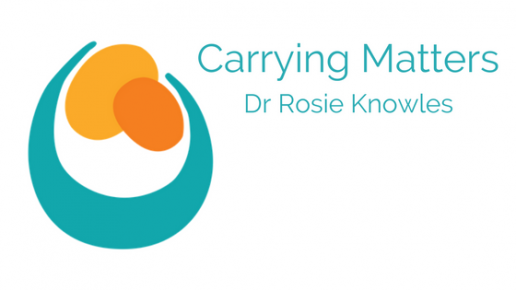
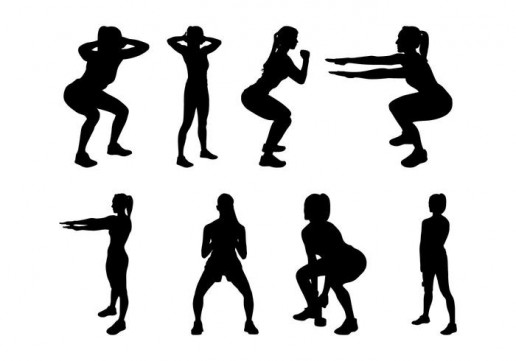
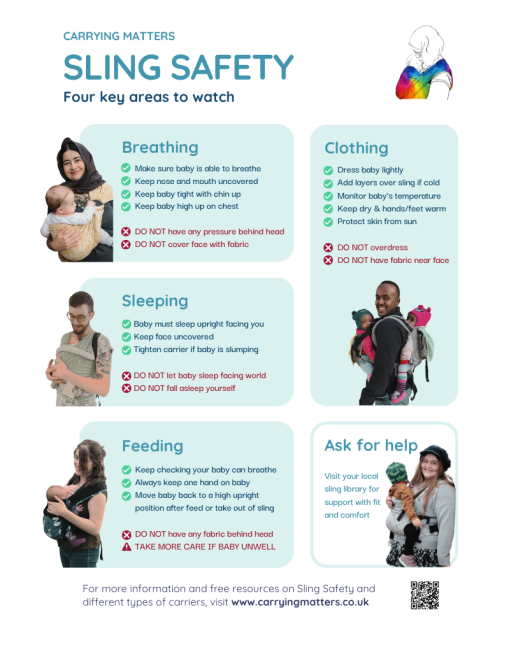
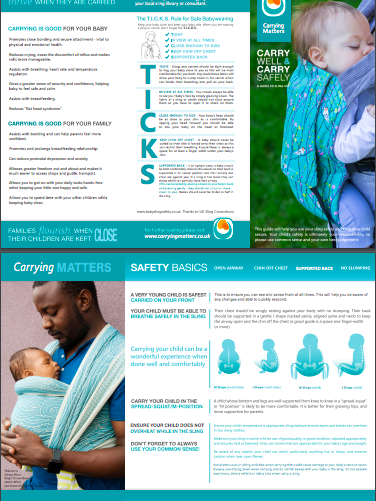
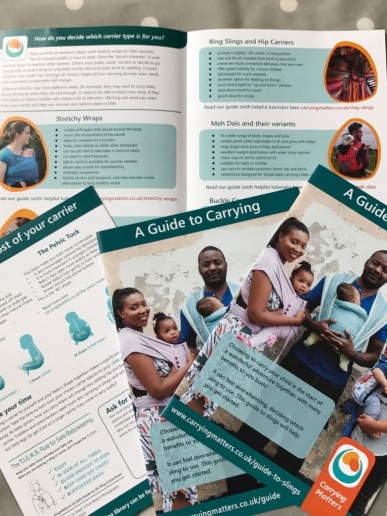
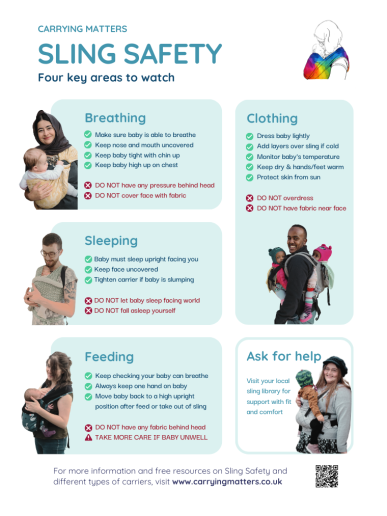
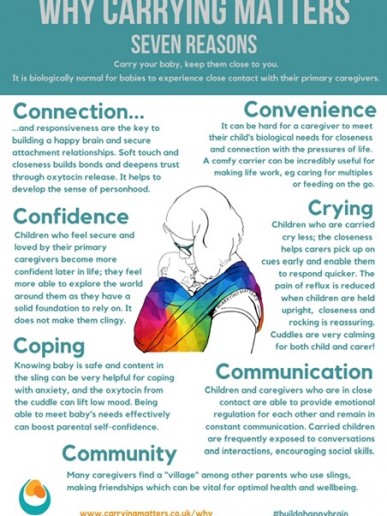
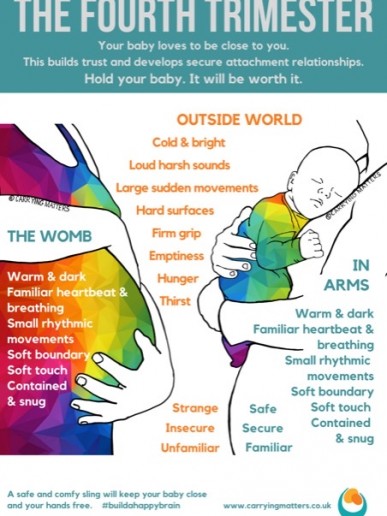
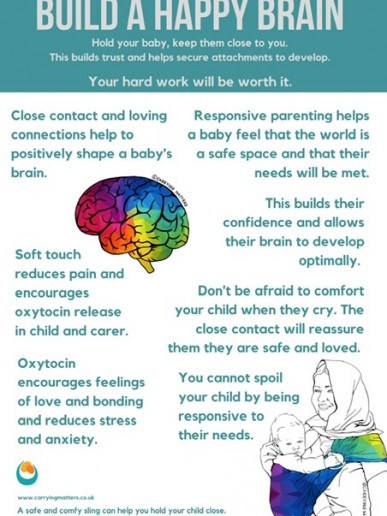
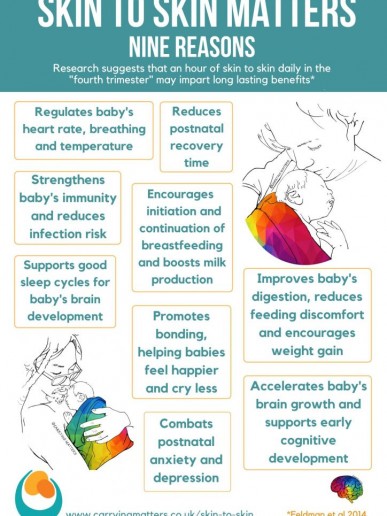
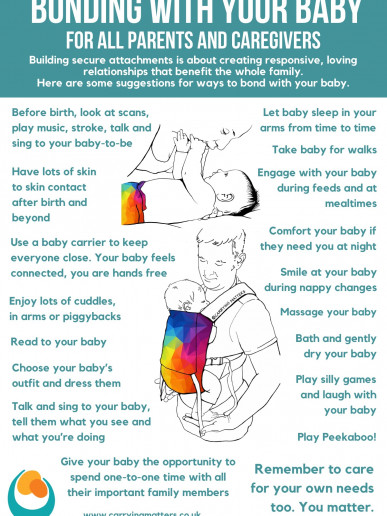
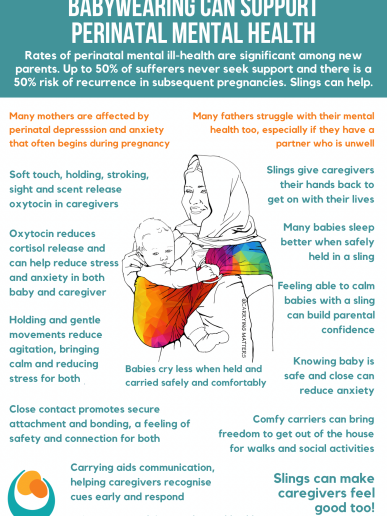
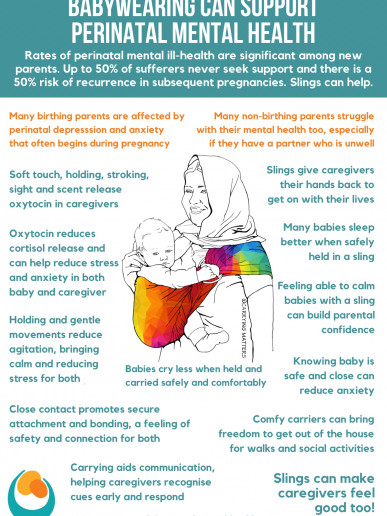
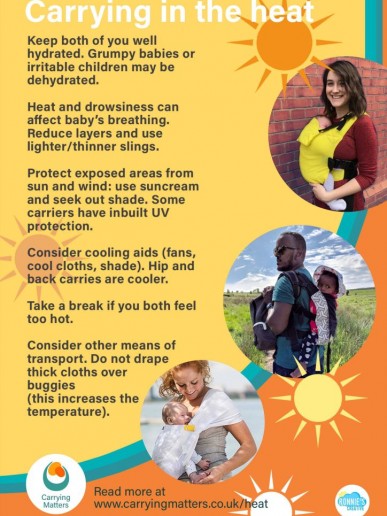
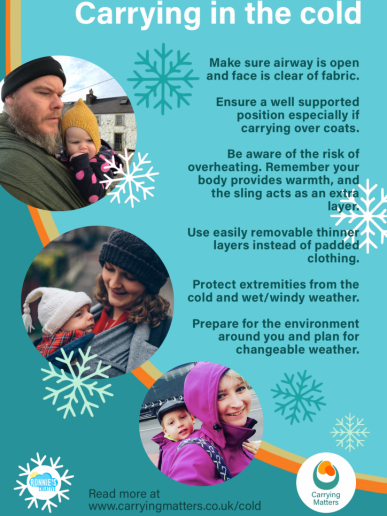
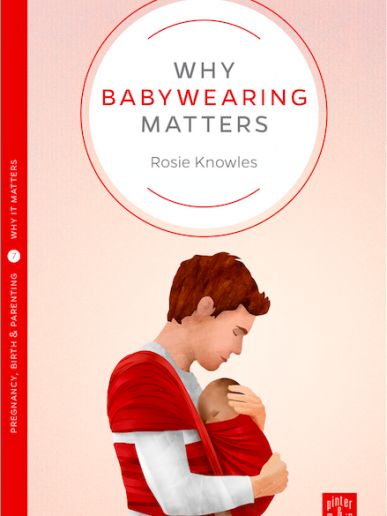

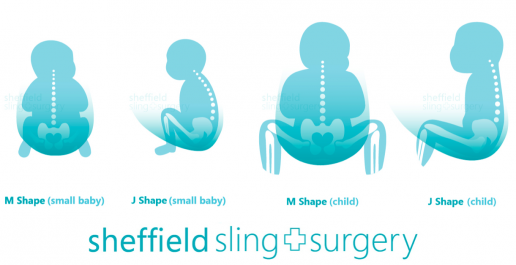
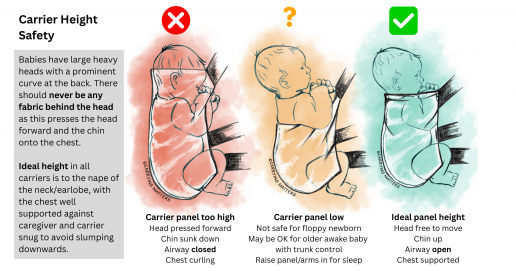
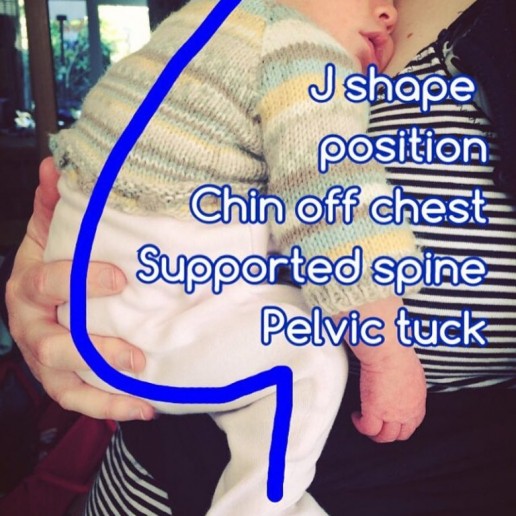
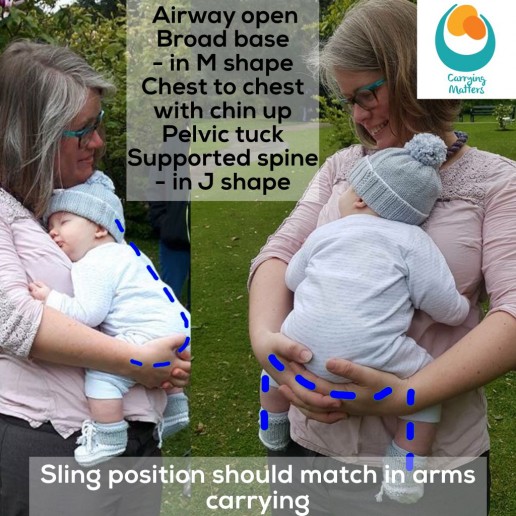
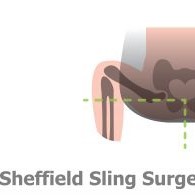
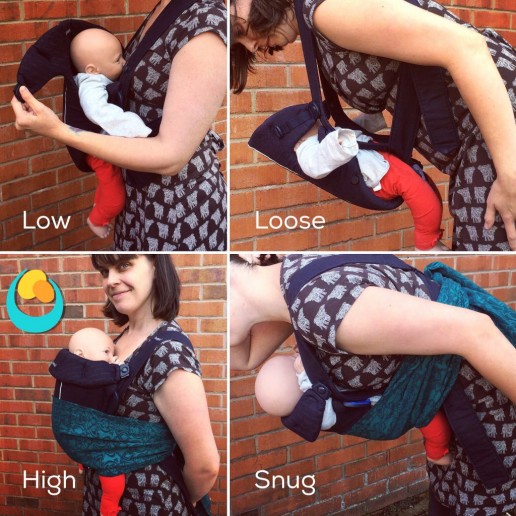
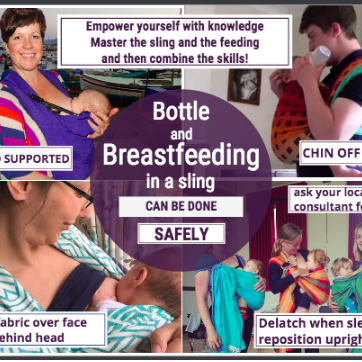
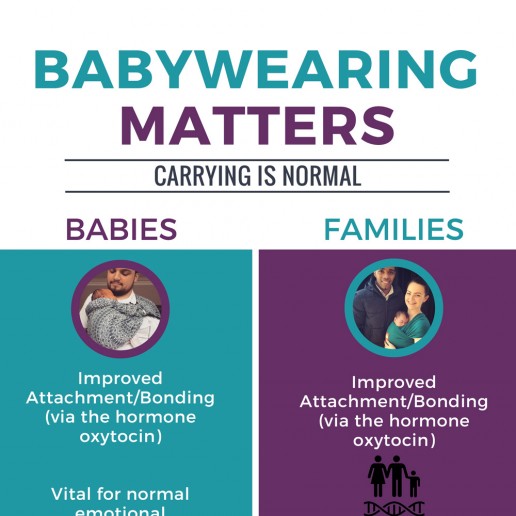
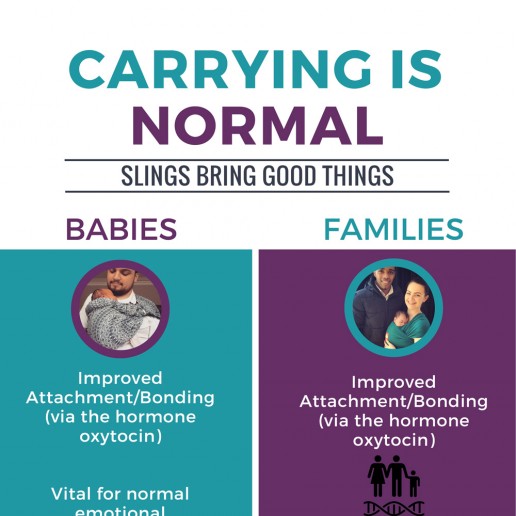
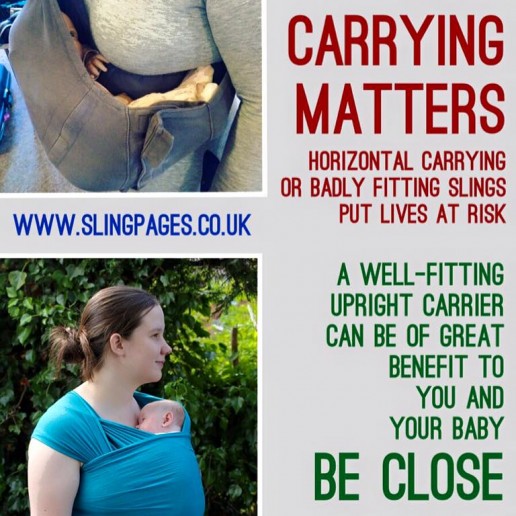
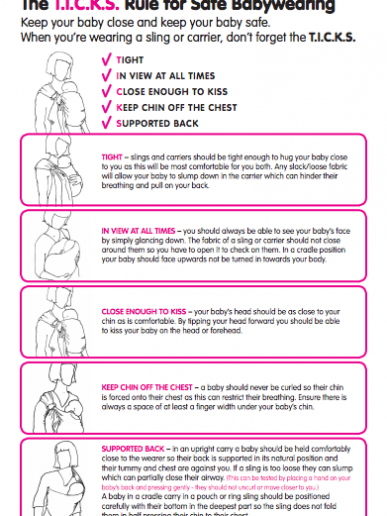
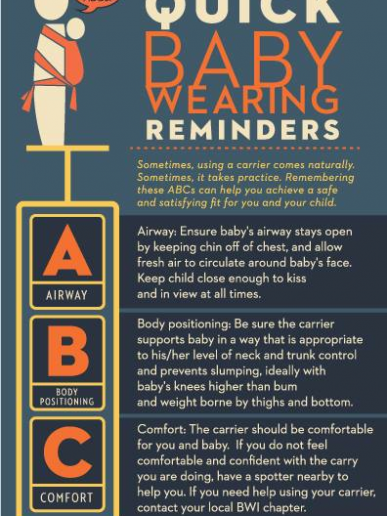
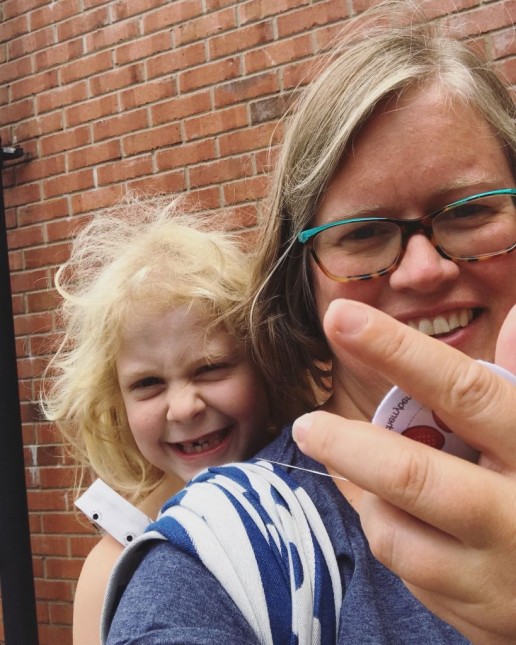
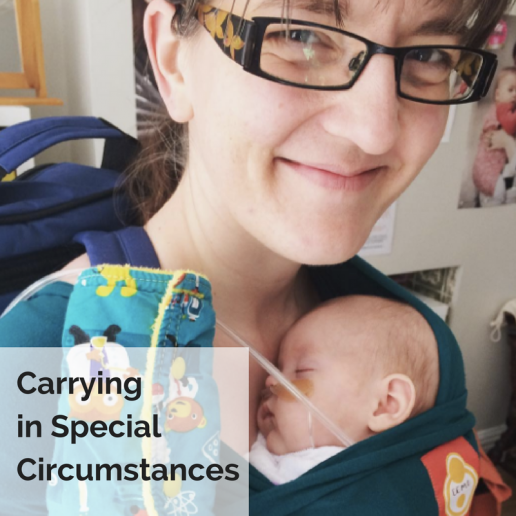
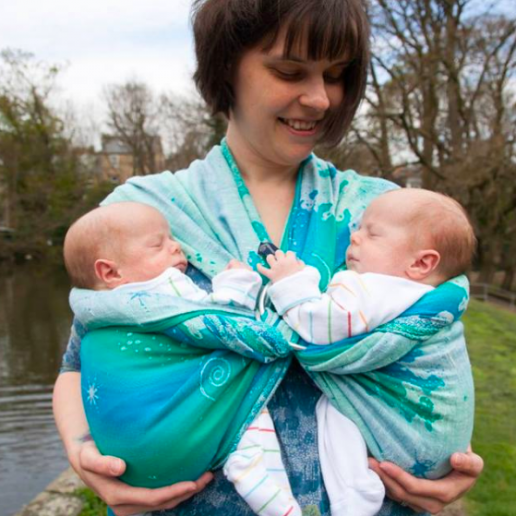
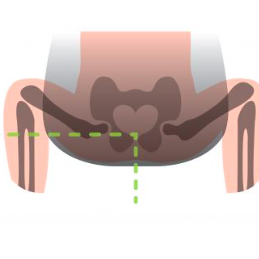
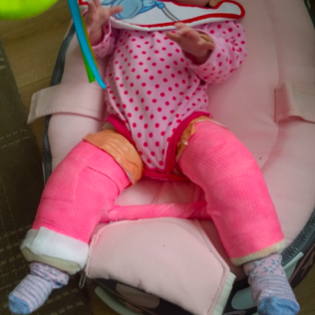
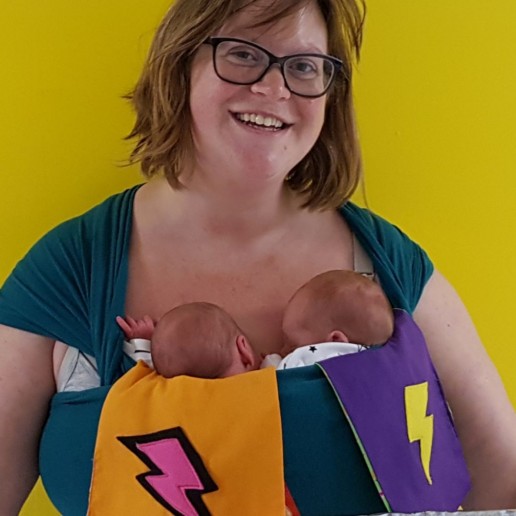
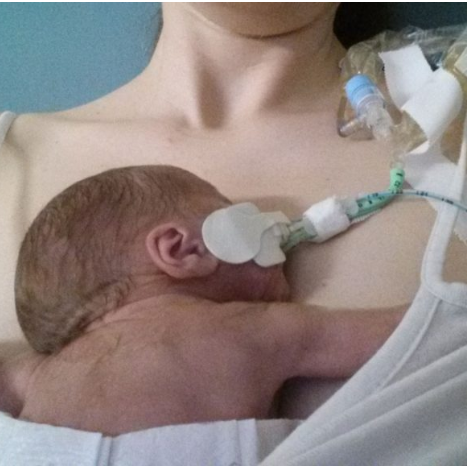
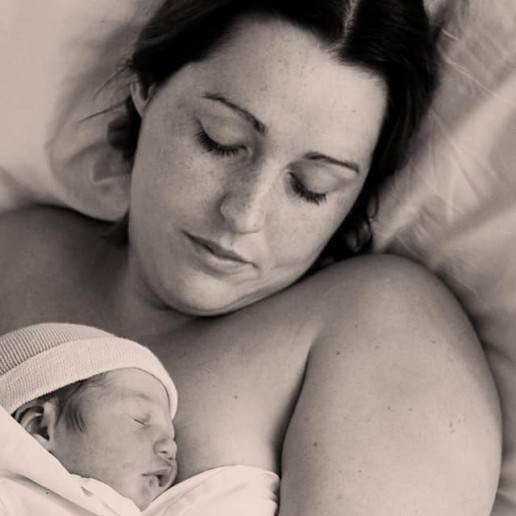

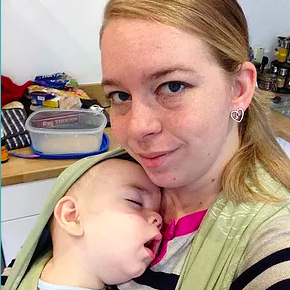
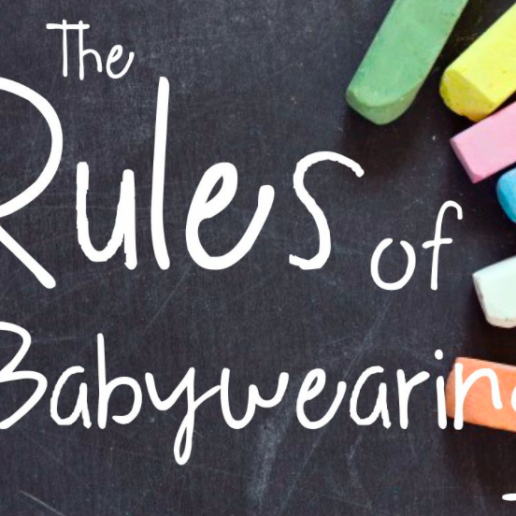
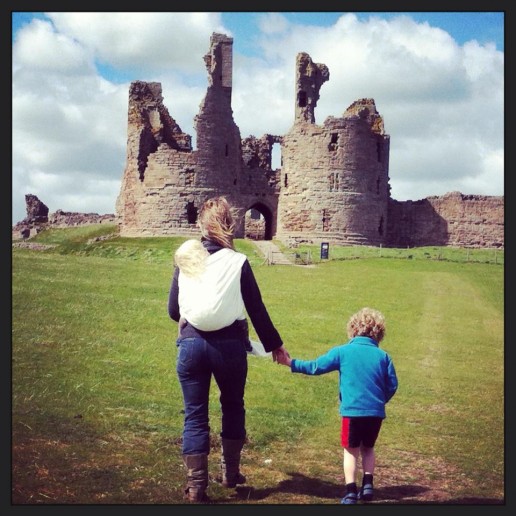
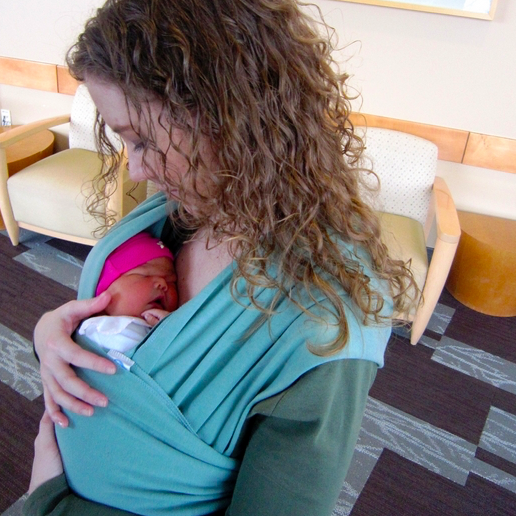
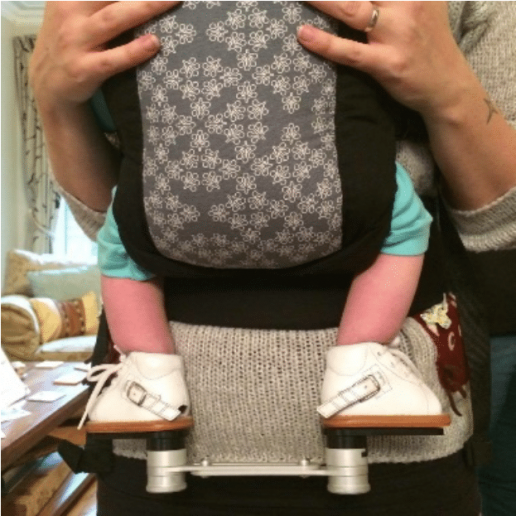
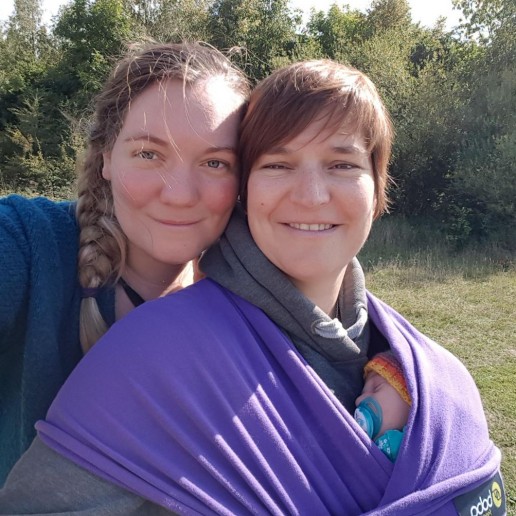

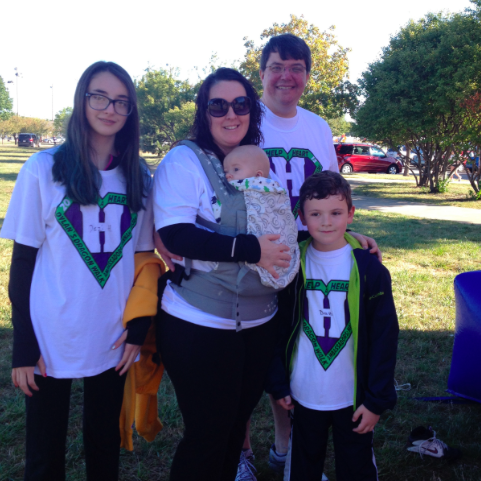
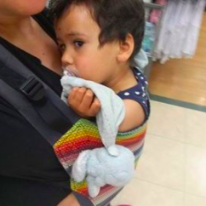
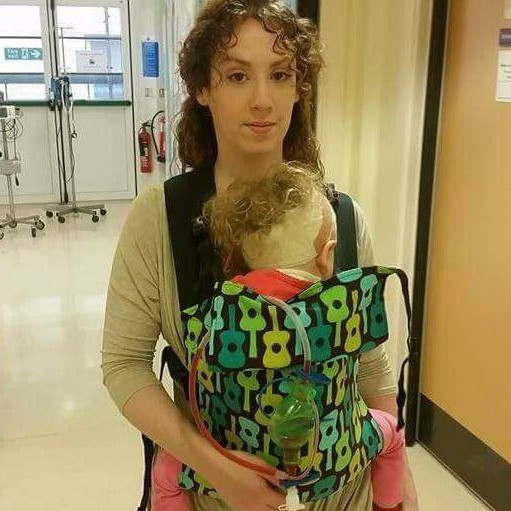
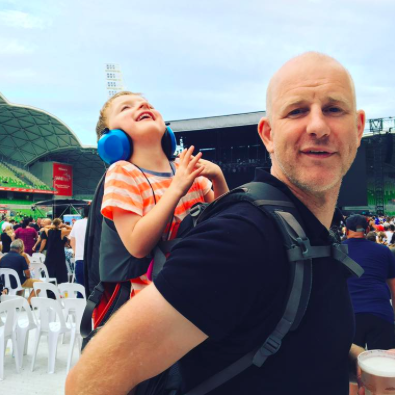
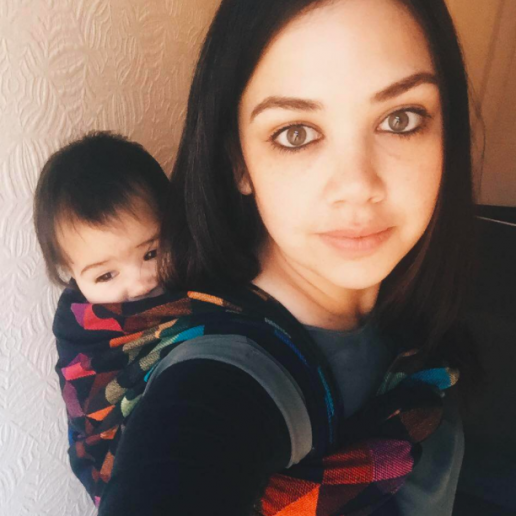
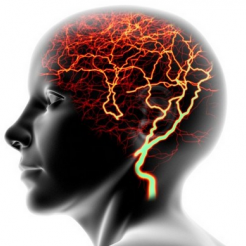
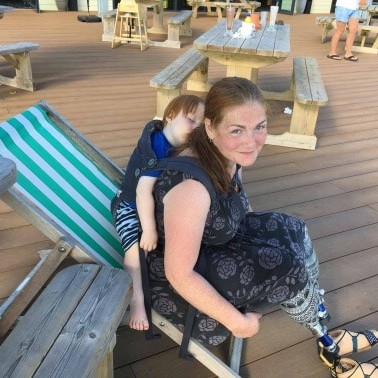
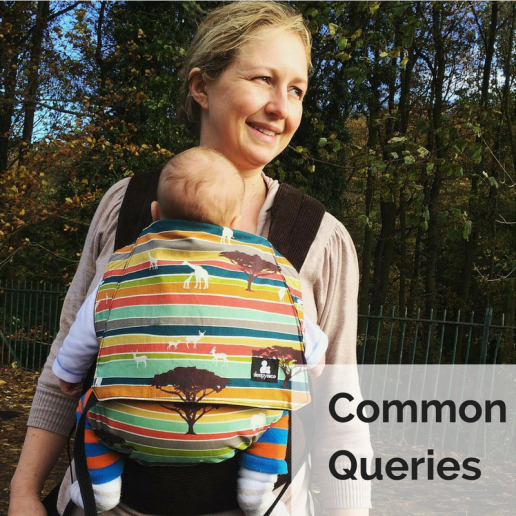
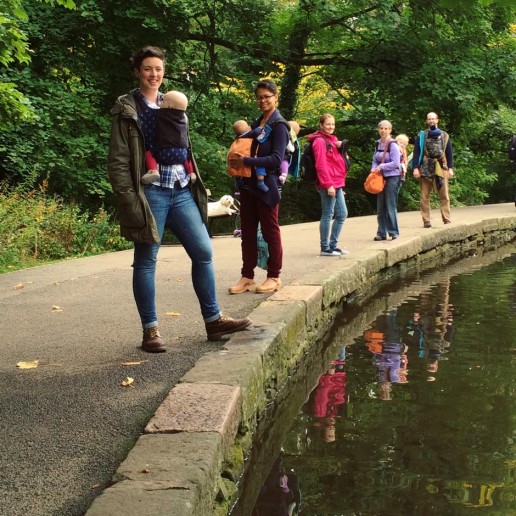
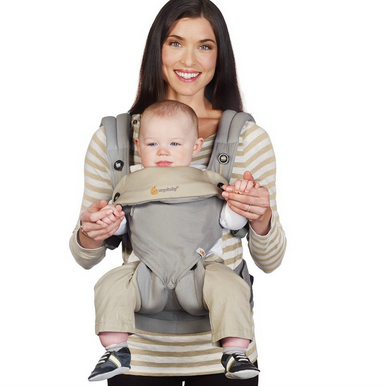
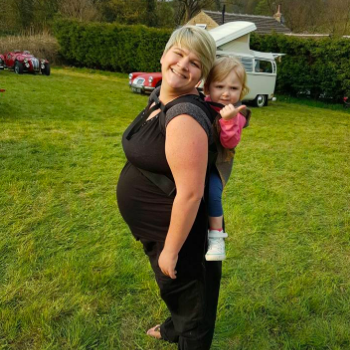
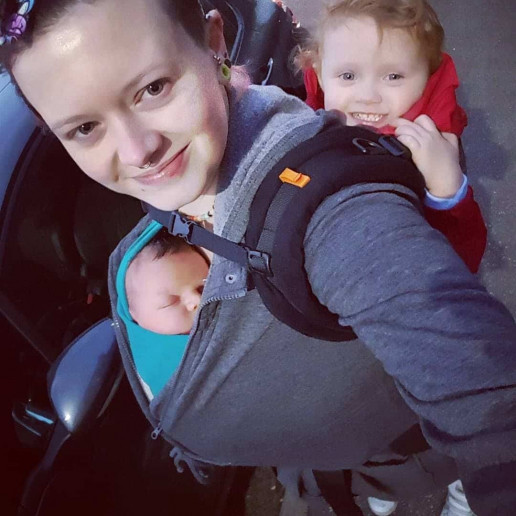
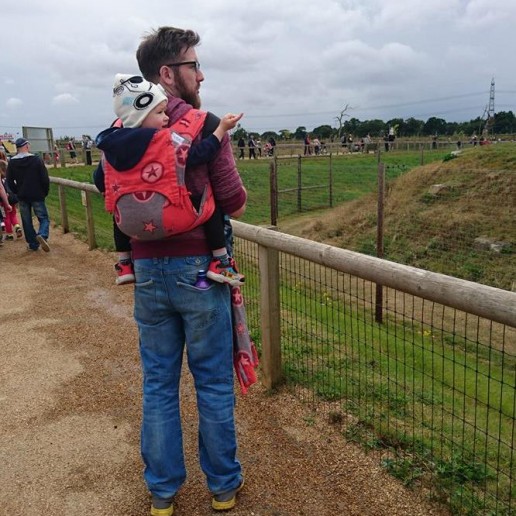
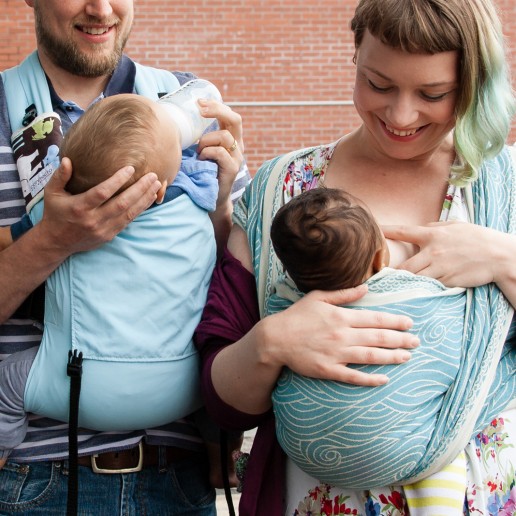
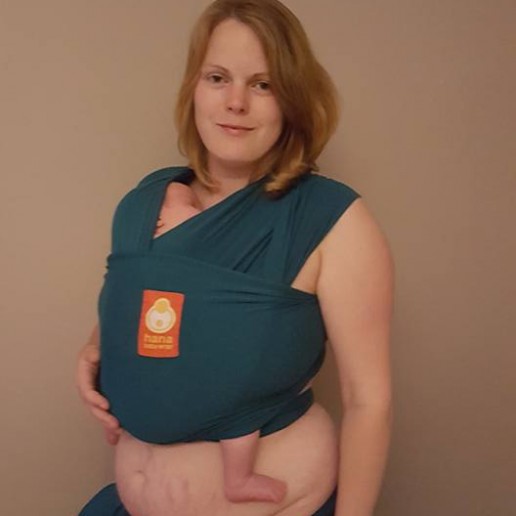
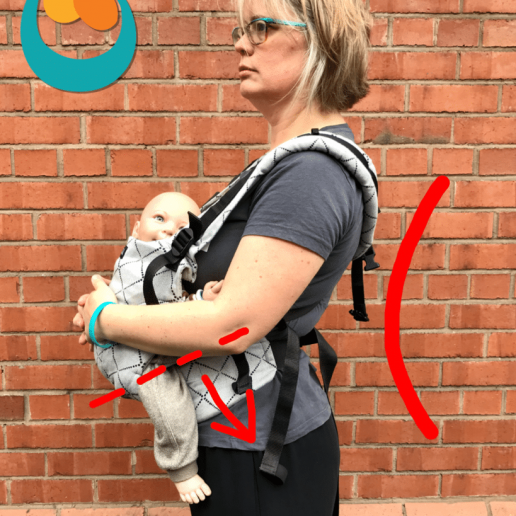
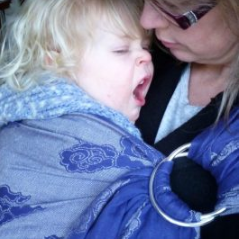
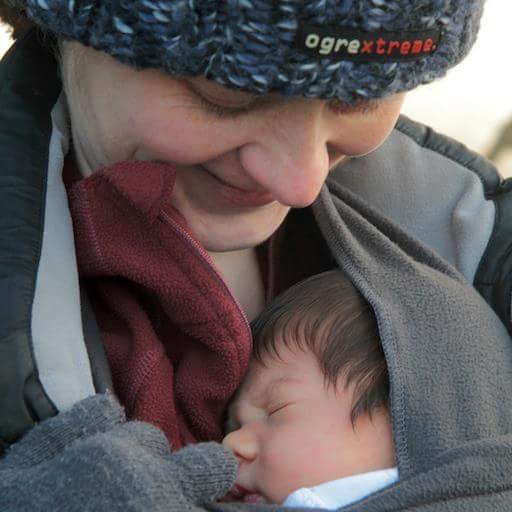

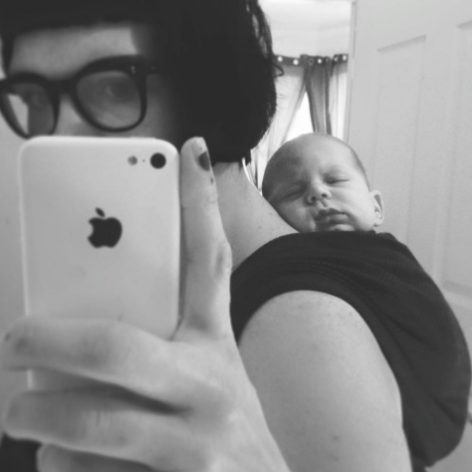

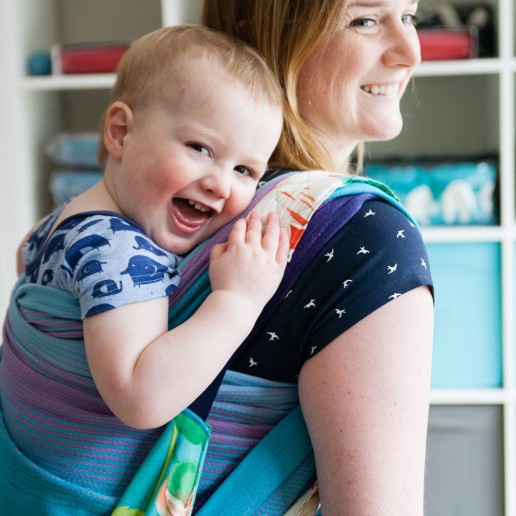
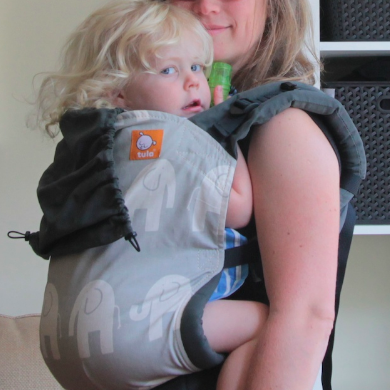
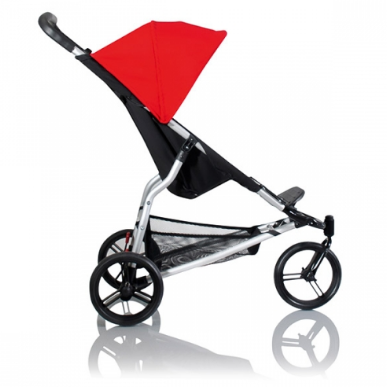
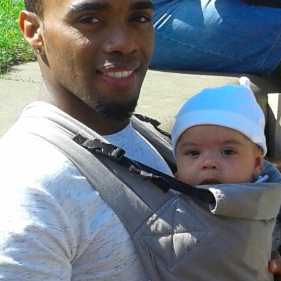
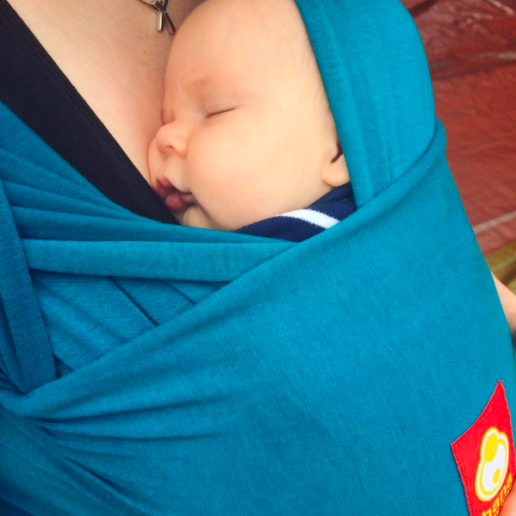
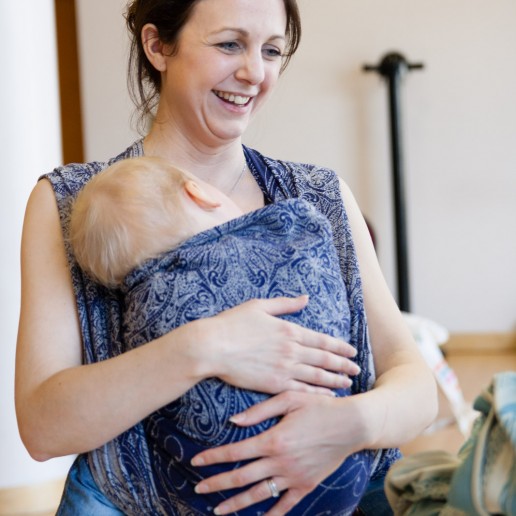
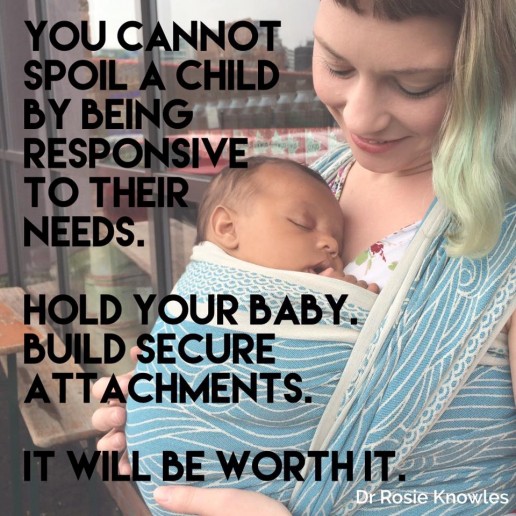
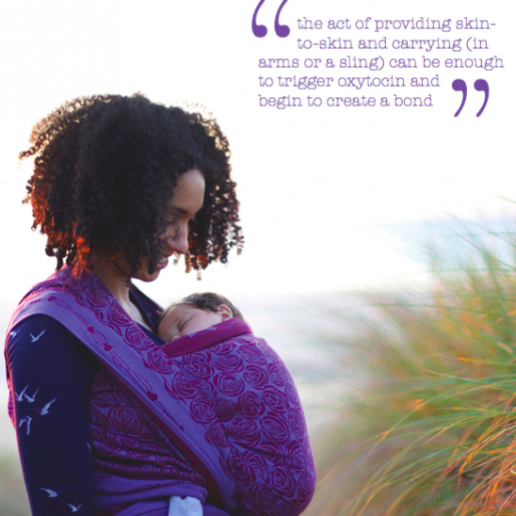
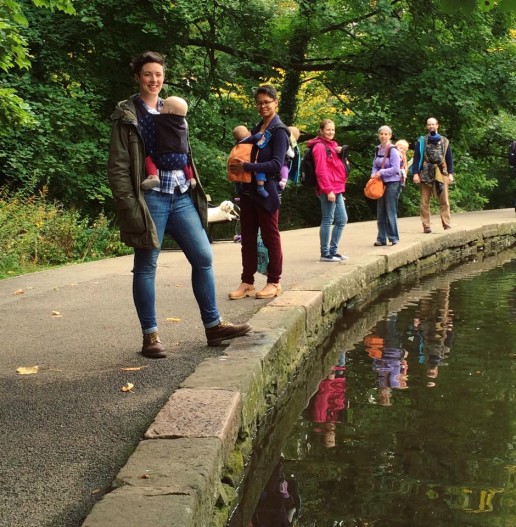
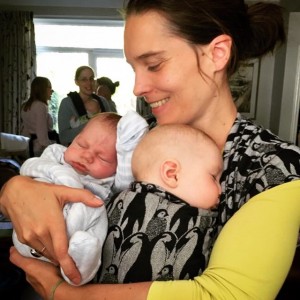
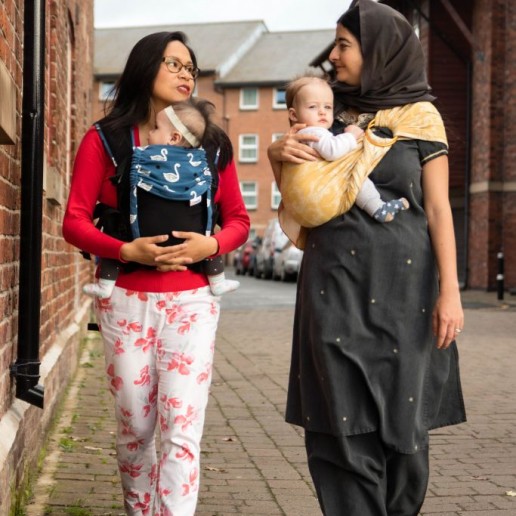
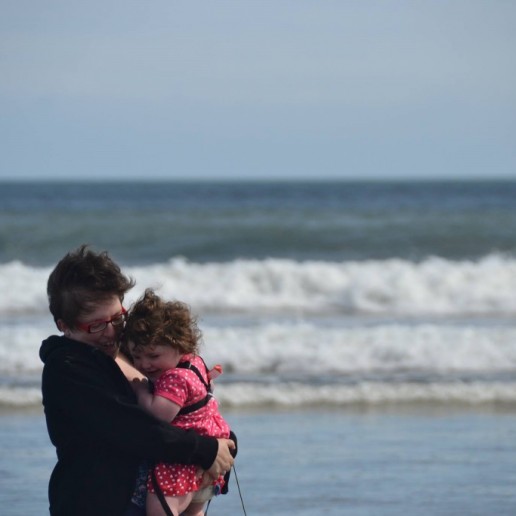
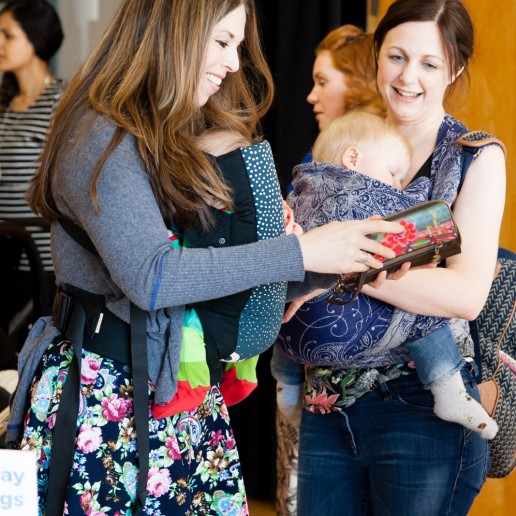

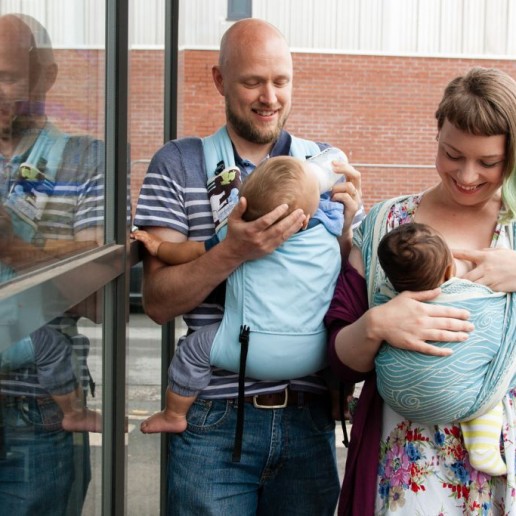
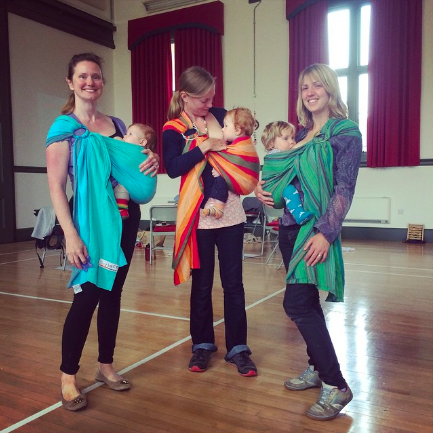

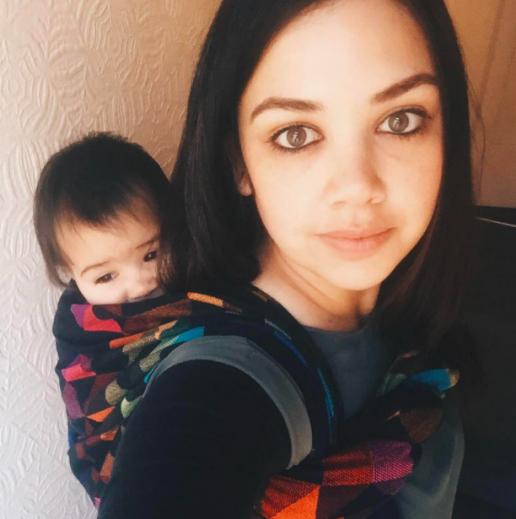
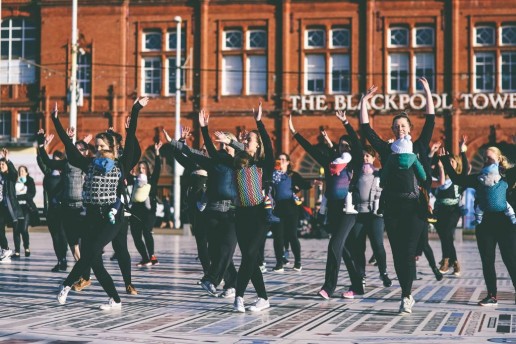
 Movement is good for you!
Movement is good for you!